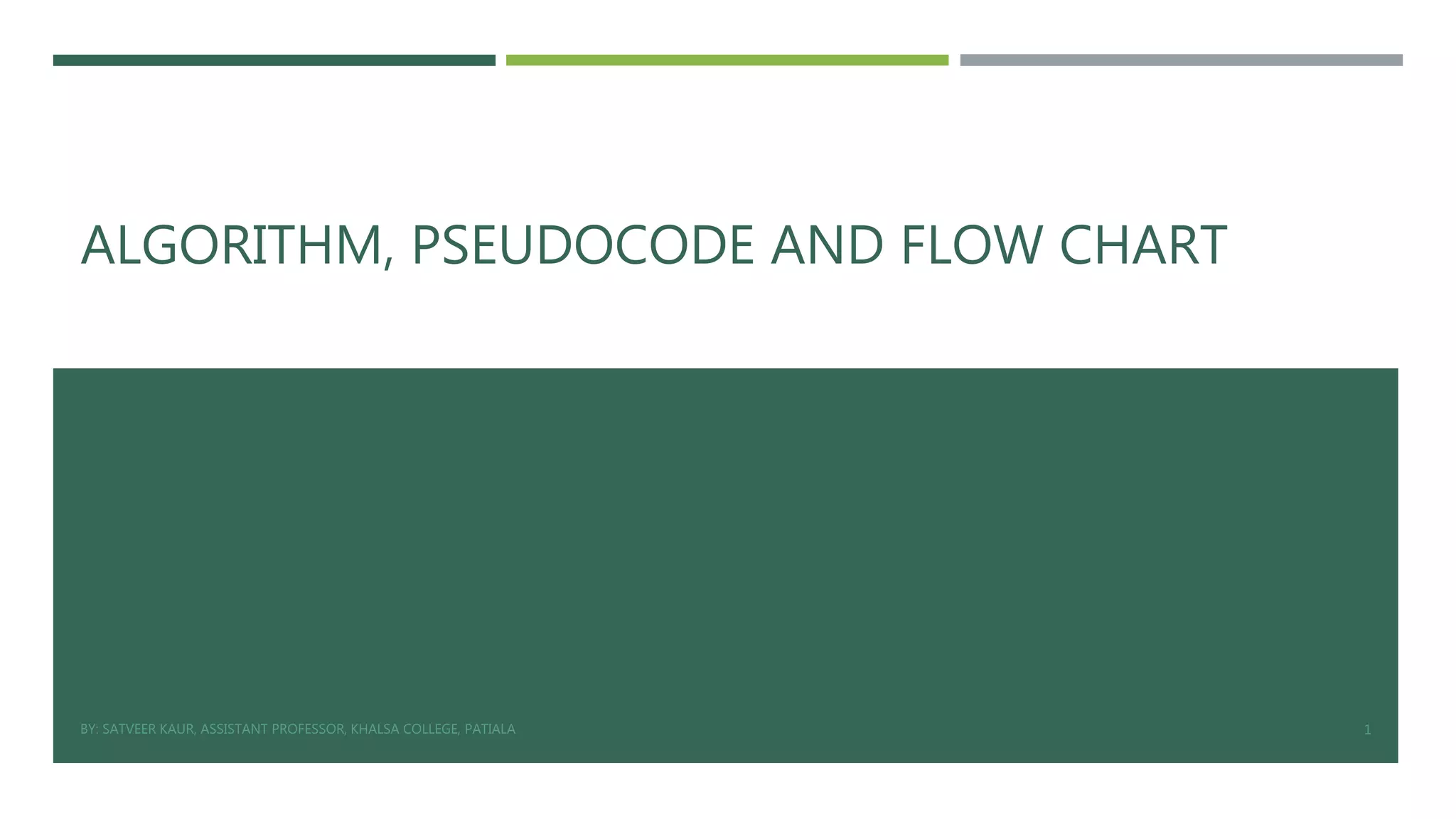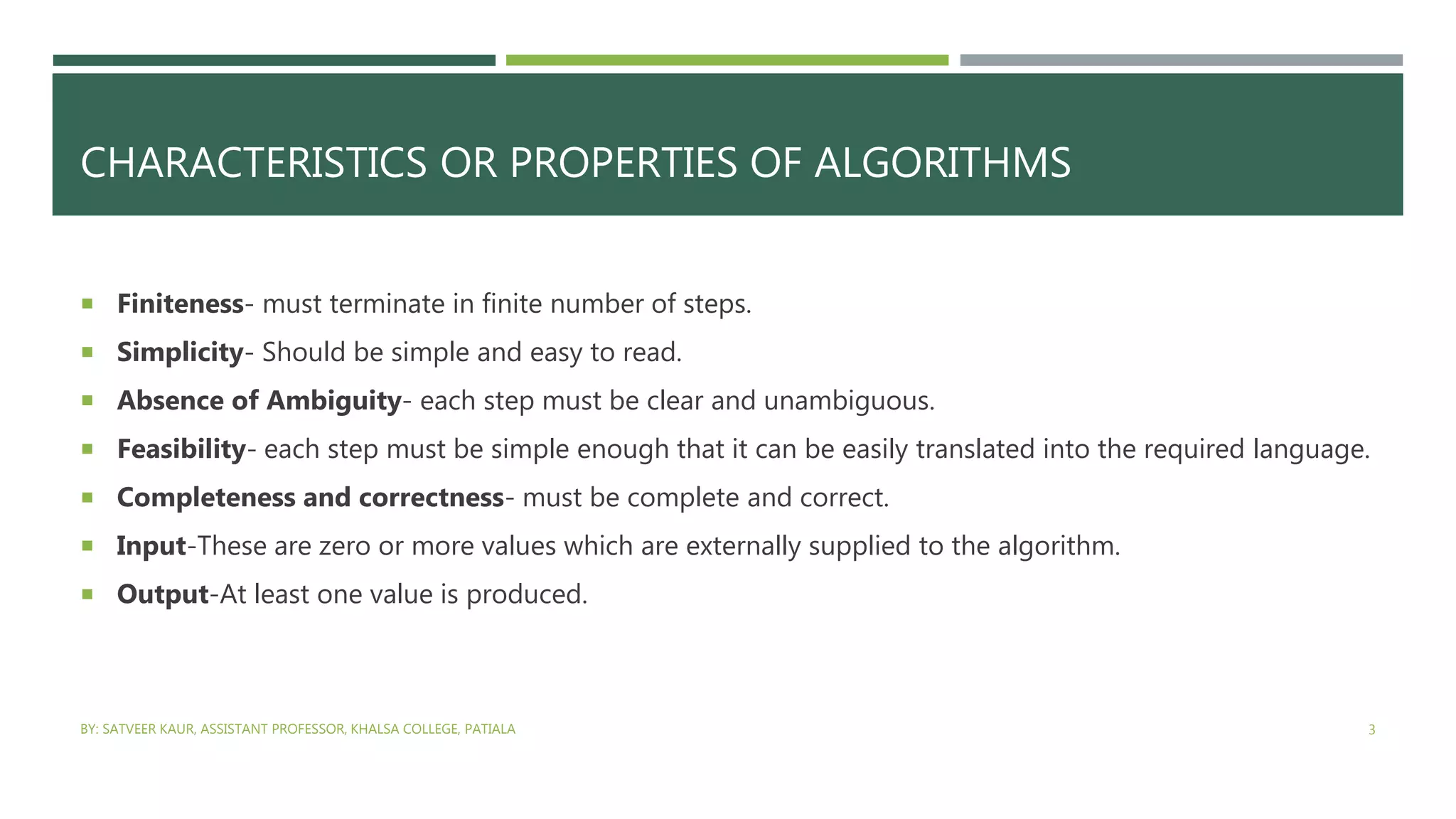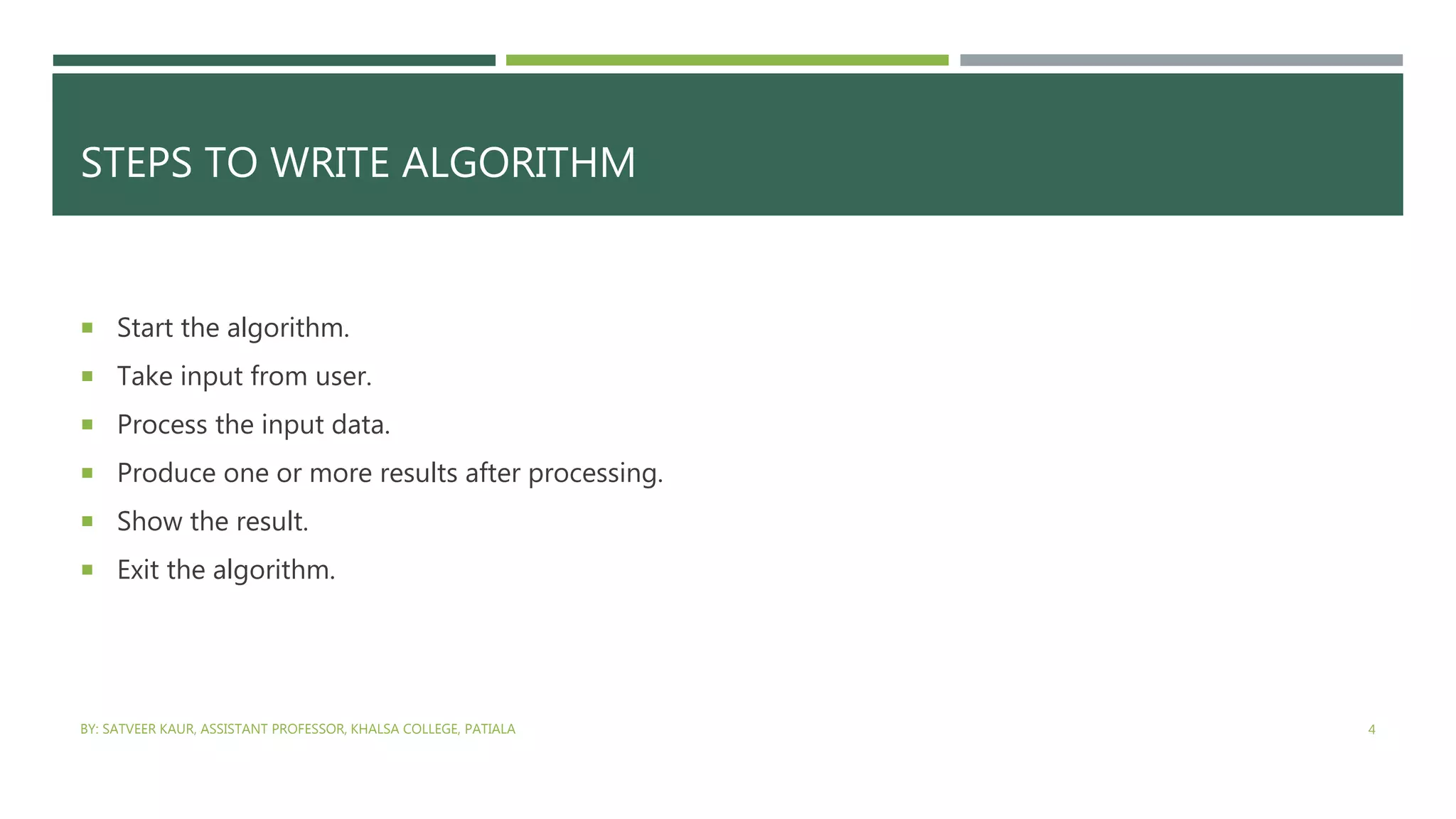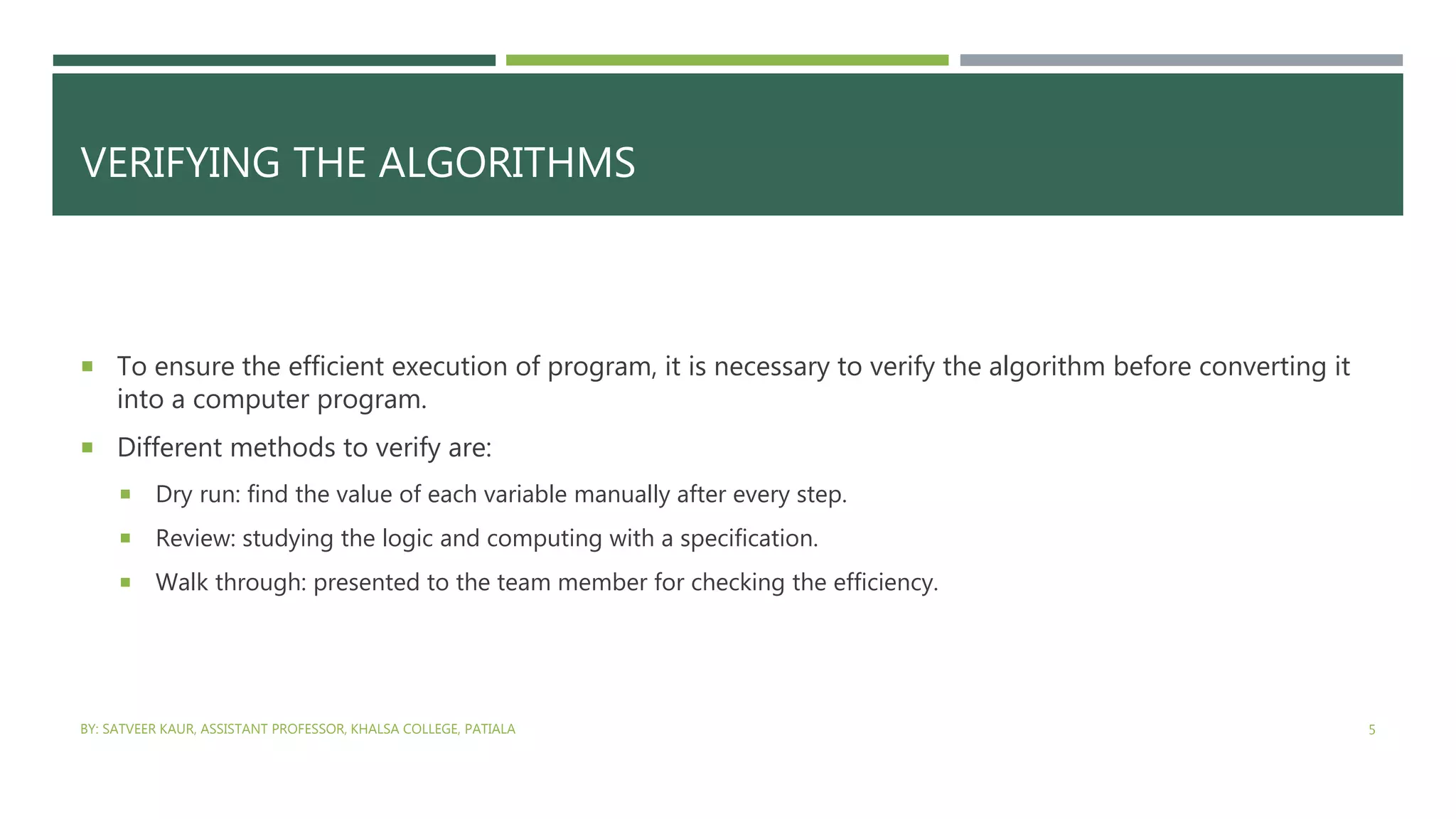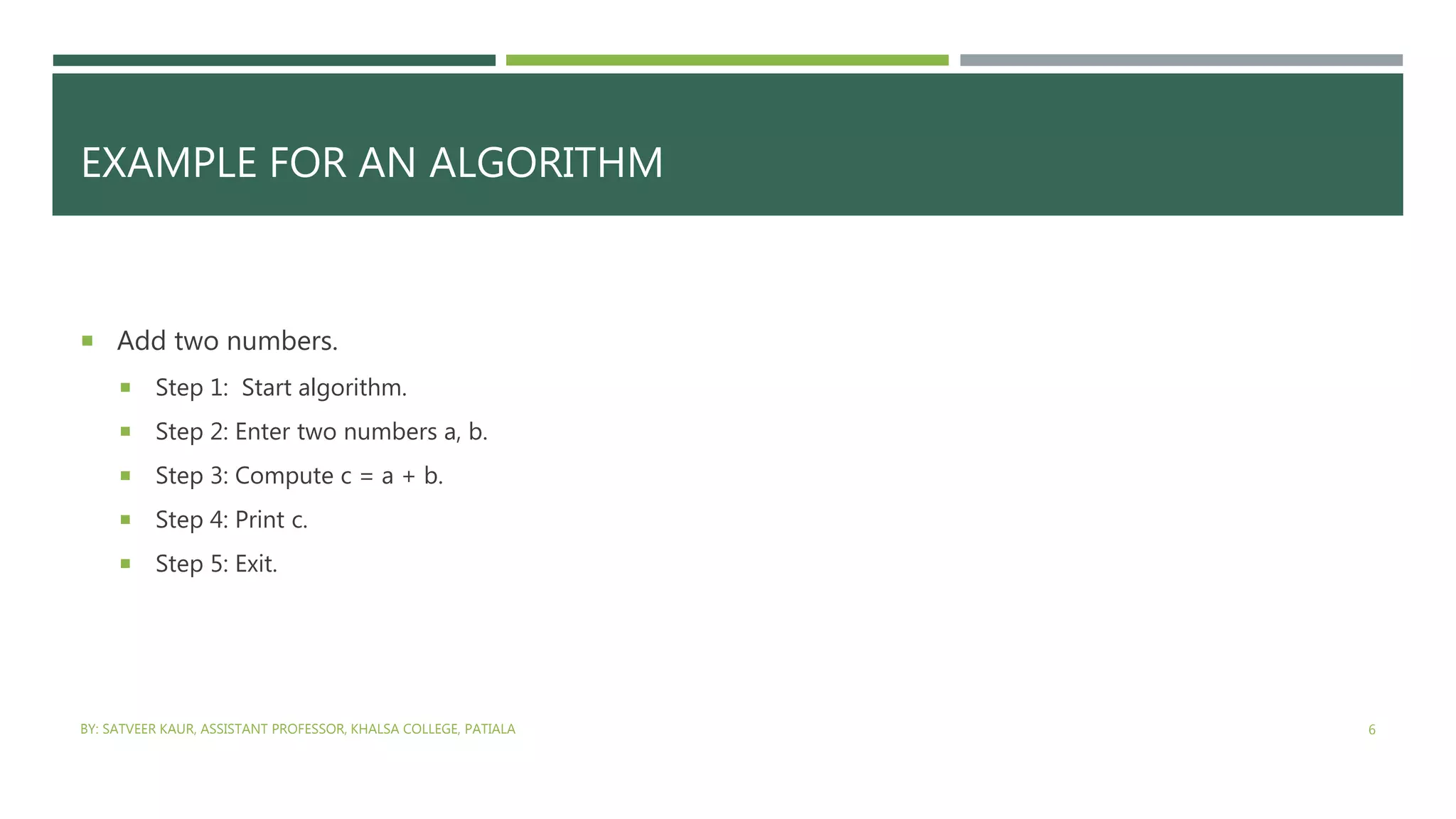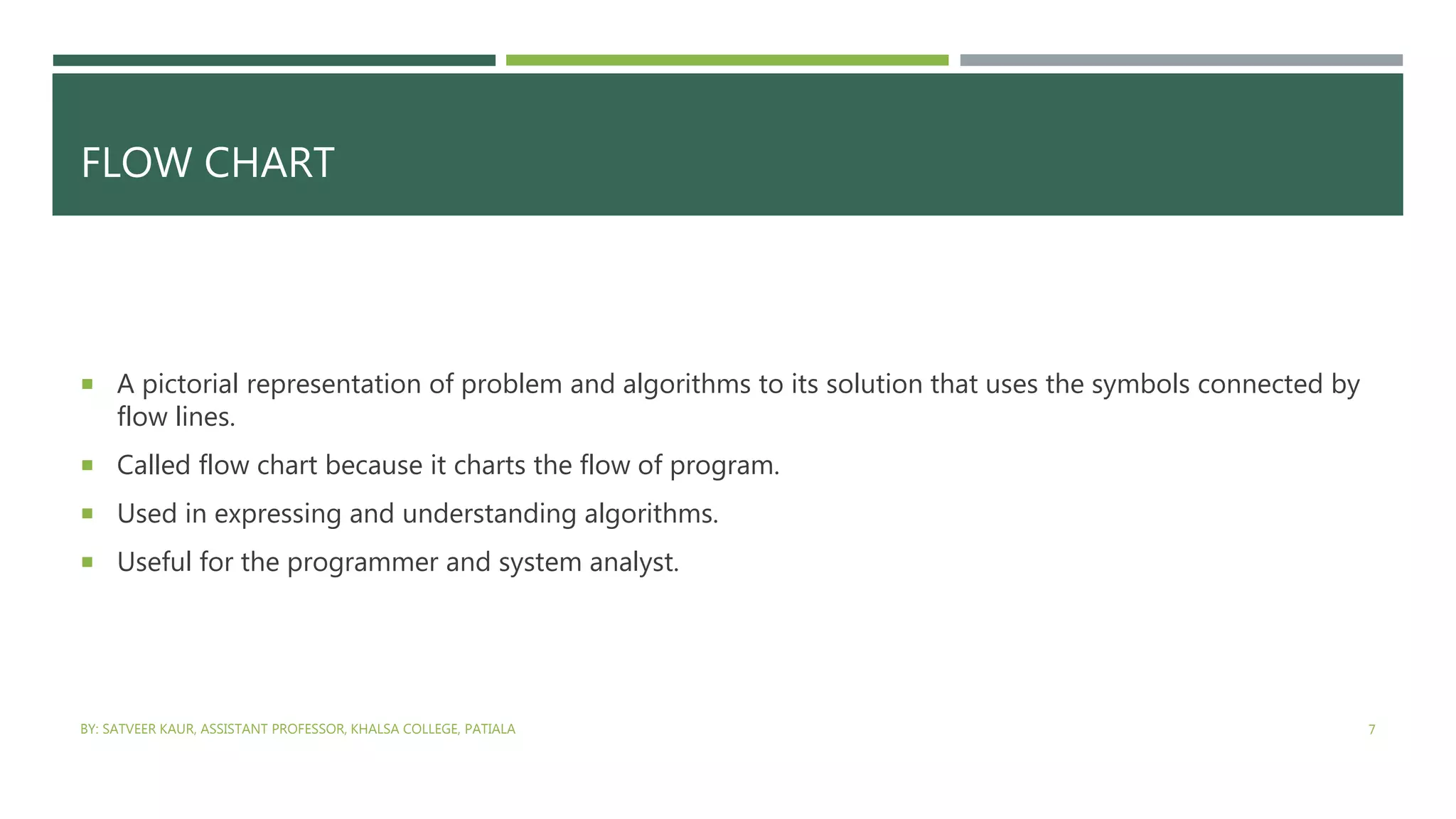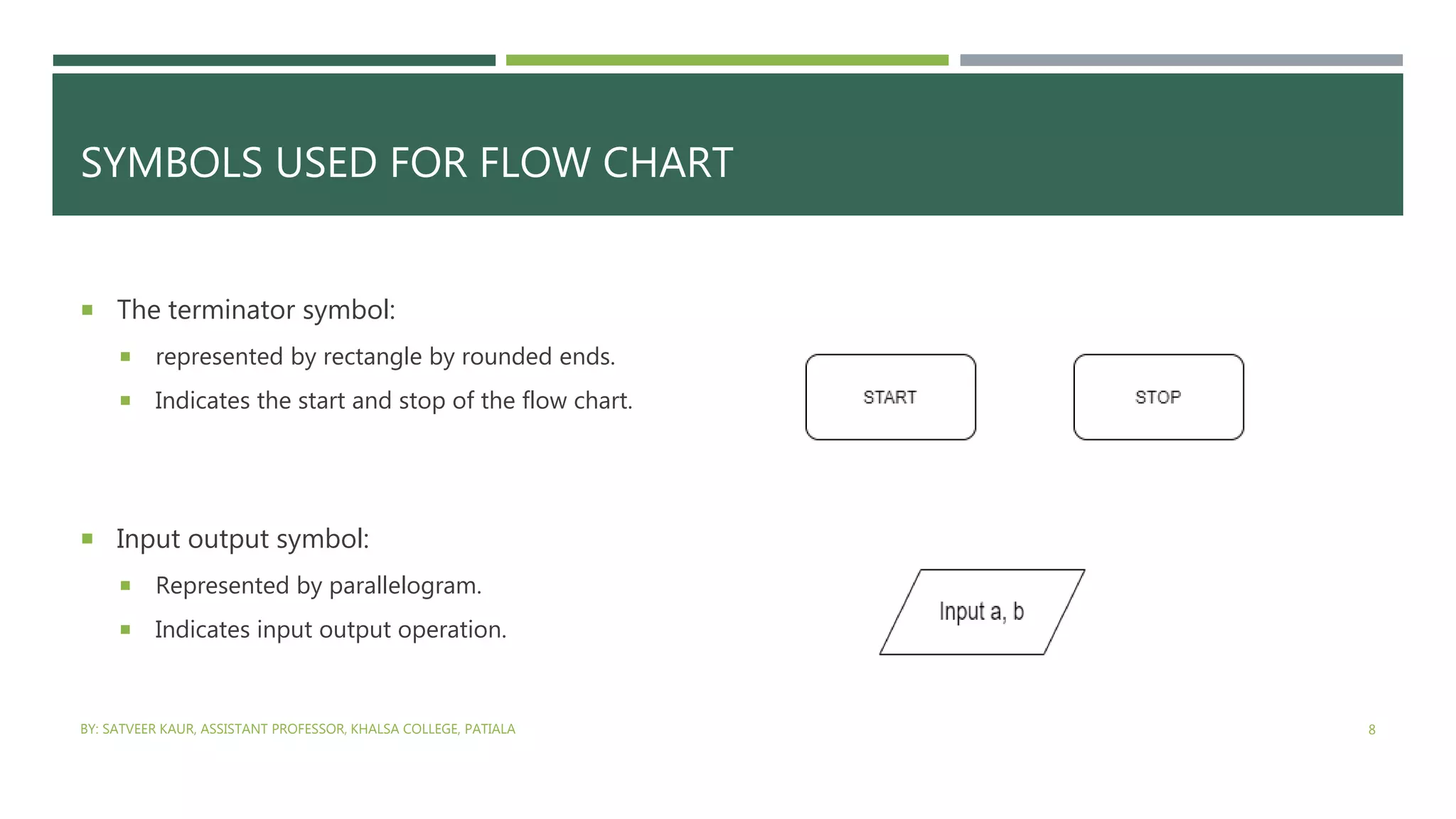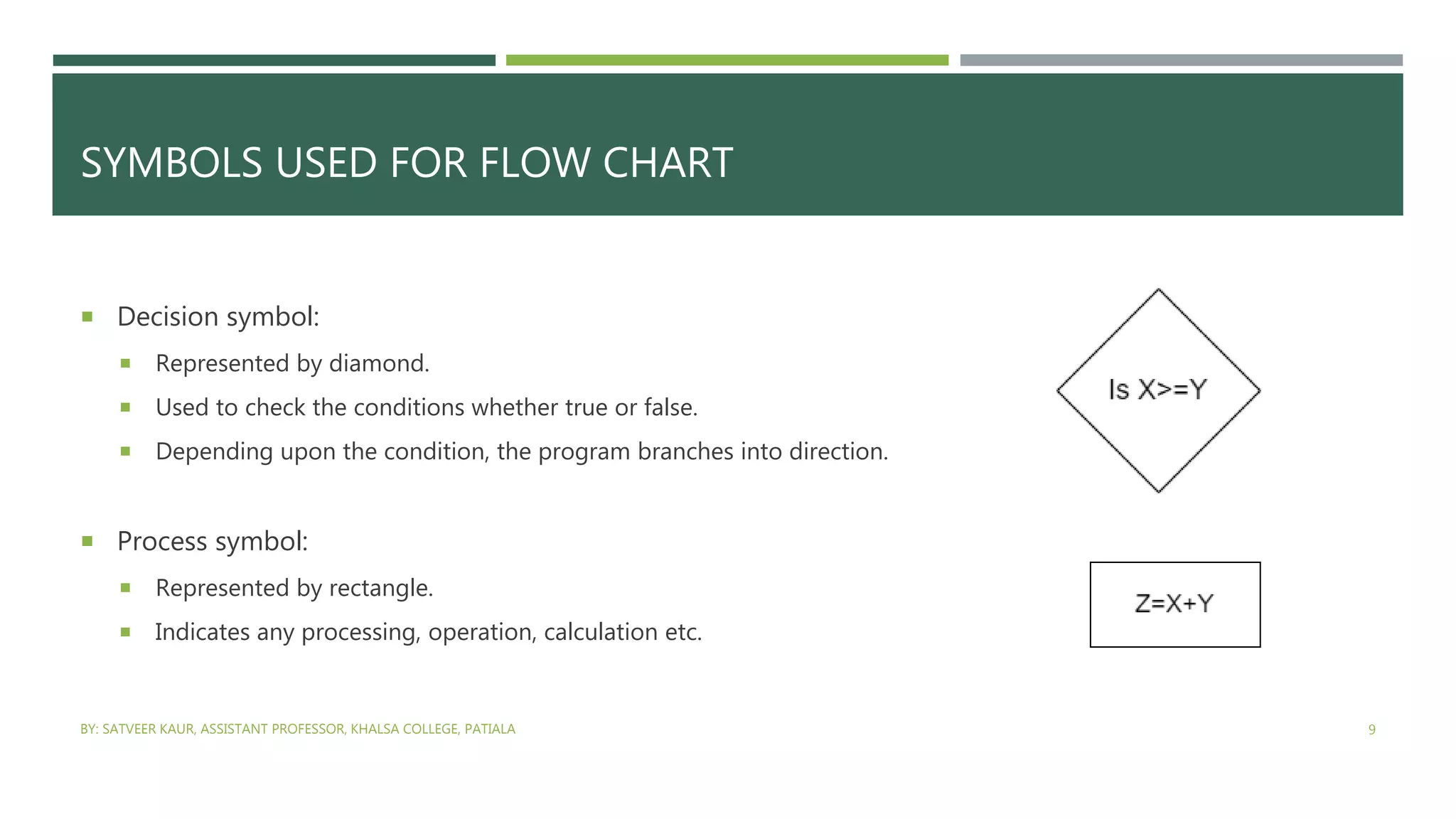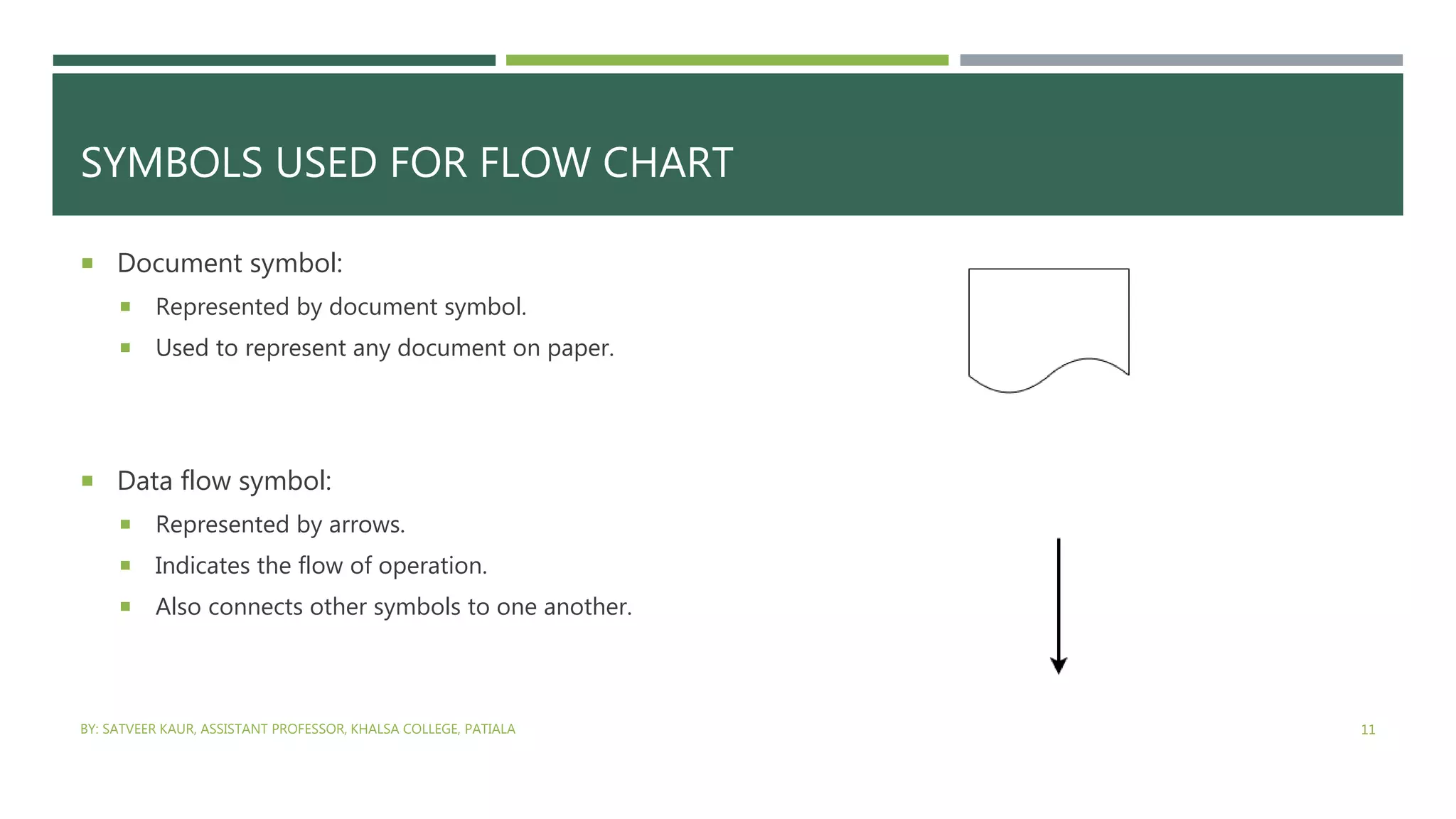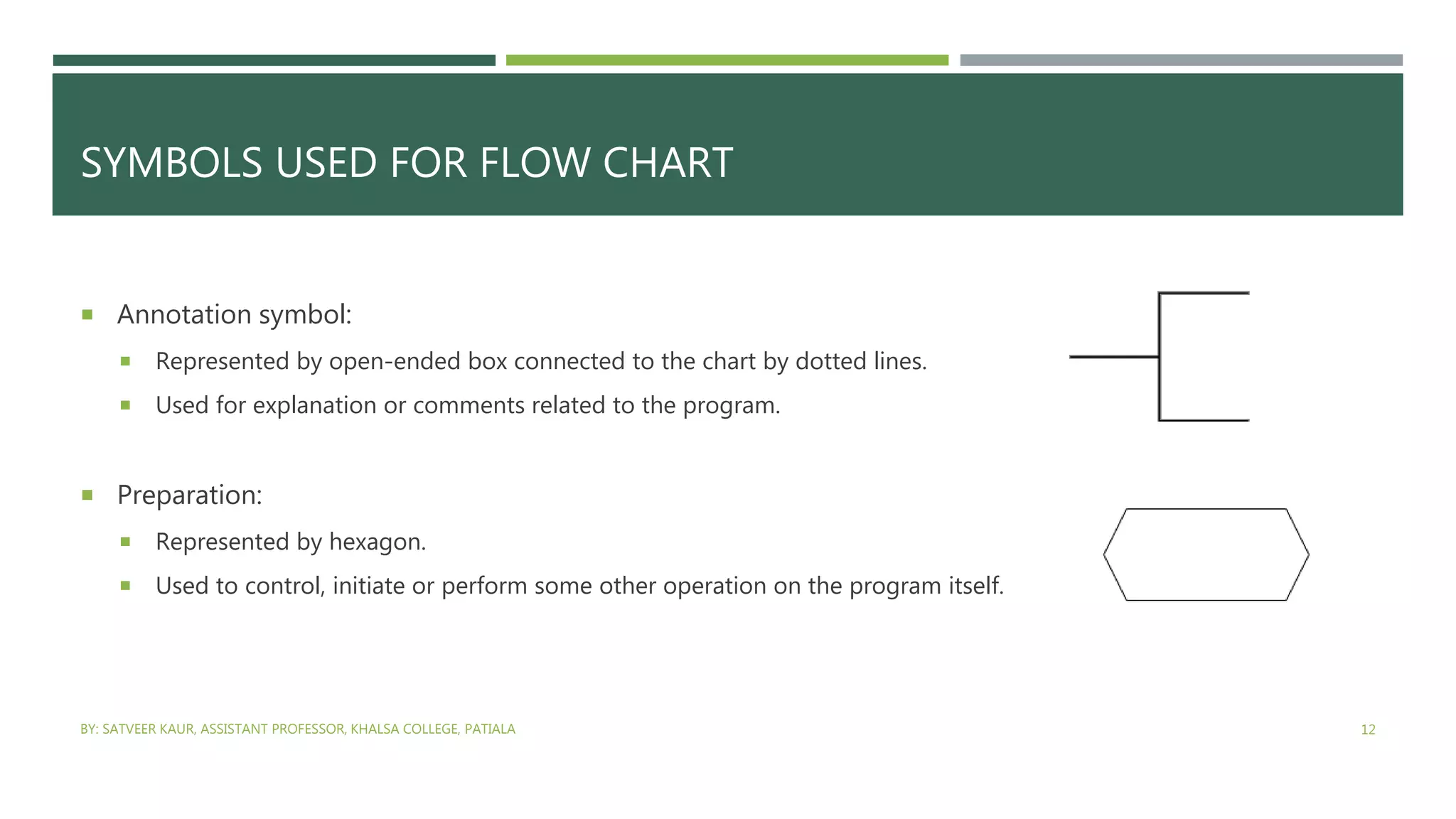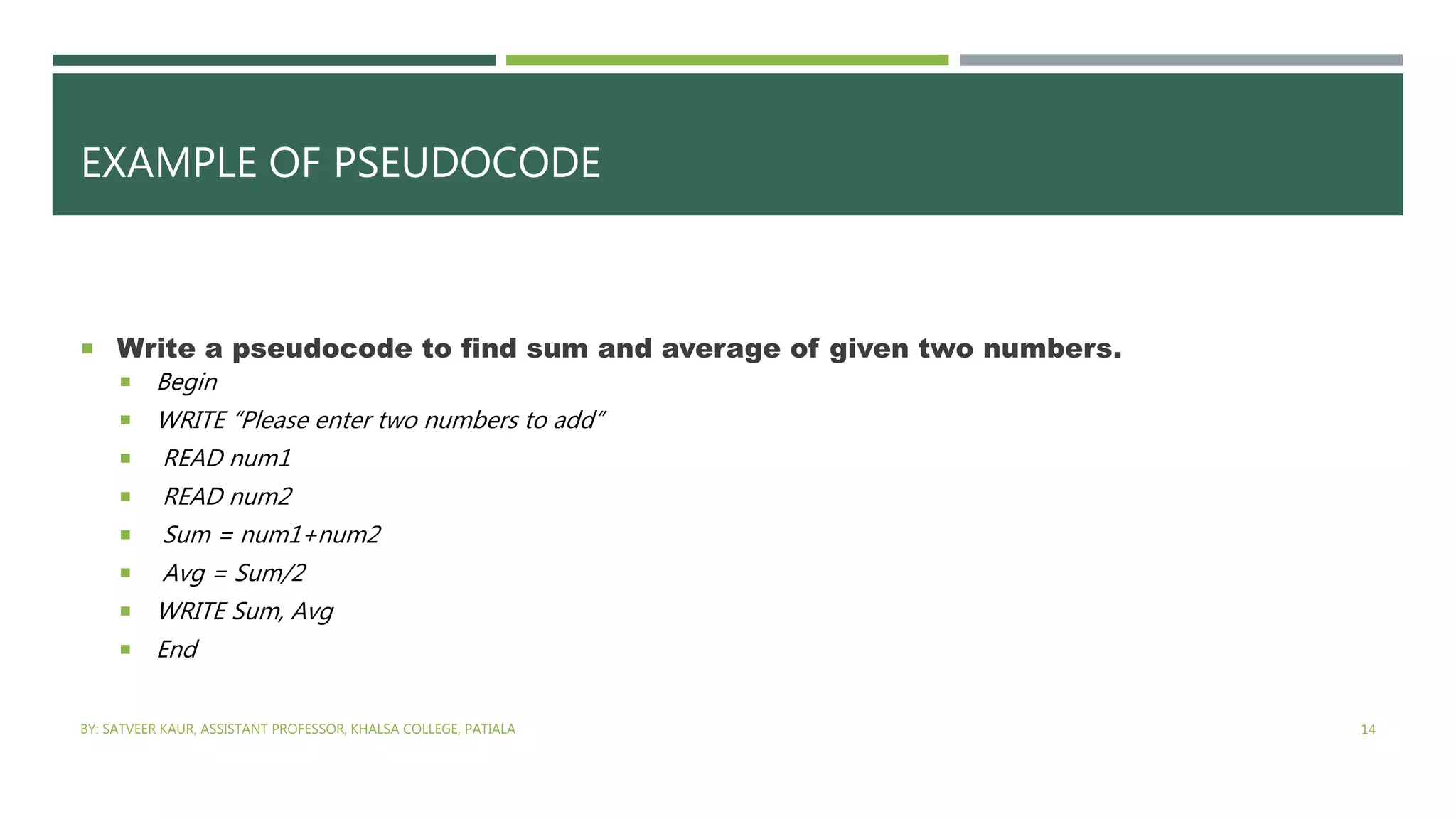The document discusses algorithms, pseudocode, and flow charts. It defines an algorithm as a finite set of steps to solve a problem, and describes characteristics like finiteness, simplicity, and absence of ambiguity. The document also outlines the typical steps to write an algorithm, methods to verify algorithms, and provides an example of adding two numbers. Additionally, it describes flow charts as a pictorial representation of a problem's solution using standard symbols. Common flow chart symbols like terminators, decision diamonds, and processes are defined. Finally, the document defines pseudocode as a high-level description of an algorithm's logic using plain English phrases instead of programming code.
